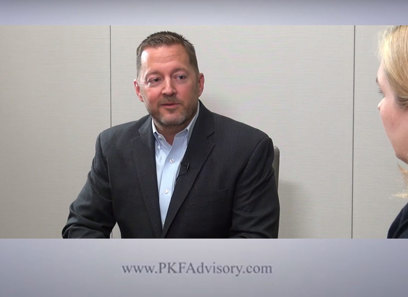The Function of Mergers and Acquisitions fit Sector Patterns and Technologies
Mergers and procurements have significantly become an important system for organizations seeking to navigate the complexities of contemporary markets. As sectors grapple with quick technical advancements and moving customer demands, comprehending the effects of M&An approaches uses beneficial understandings right into future patterns.
Understanding M&A Dynamics
Mergers and procurements (M&A) regularly function as pivotal approaches for business looking for growth, affordable benefit, or market debt consolidation. Recognizing the dynamics of M&A is essential for both experts and stakeholders in browsing the complex landscape of corporate transactions. M&A procedures usually entail numerous stages, including target identification, due persistance, arrangement, and integration, each carrying its own challenges and dangers.
The motivations behind M&A can differ significantly; companies may pursue these techniques to access new markets, acquire innovative technologies, or attain operational harmonies. Additionally, modifications in economic problems and governing atmospheres can affect M&A task, triggering companies to adjust their methods appropriately.
Successful execution of M&A purchases requires a comprehensive understanding of the social, economic, and functional implications included. Business need to examine not only the measurable facets, such as appraisal and financial performance, however additionally the qualitative aspects, including business society and worker sentiment. Inevitably, the capacity to efficiently manage these characteristics can determine the success or failure of an M&An effort, highlighting the requirement for strategic preparation and informed decision-making throughout the process.
Effect On Market Competitors
The outcomes of mergings and purchases on market competitors can be profound, frequently reshaping market landscapes. When firms combine, they regularly improve their market power, enabling them to establish rates more openly and determine terms to vendors and consumers. This increased power can cause lowered competition, as smaller sized players may struggle to complete versus the combined resources and capabilities of the joined entity.
Furthermore, M&A tasks can result in market focus, where fewer firms control the sector. This focus can suppress competitors, leading to higher rates and less options for customers. The competitive ramifications of purchases and mergings are not widely negative. In some instances, they can develop effectiveness that benefit consumers, such as enhanced services or lower prices through economic climates of range.

Development With Cooperation
Collaboration in between companies can work as a considerable catalyst for advancement, allowing firms to take advantage of each other's resources and strengths. They create a fertile ground for the development of brand-new ideas, products, and modern technologies when companies combine their know-how. This synergy often leads to boosted analytic capacities, allowing firms to deal with complex challenges that would be difficult to resolve independently.
Moreover, joint initiatives can increase the study and advancement process. By pooling their technological capacities and intellectual funding, business can significantly reduce time-to-market for cutting-edge solutions. This is especially evident in industries where quick technological improvements are vital, such as telecoms, pharmaceuticals, and infotech.
Furthermore, partnerships created via procurements and mergers can promote a culture of technology - Mergers and Discover More Acquisitions. When employees from various backgrounds and capability come together, they contribute varied perspectives that can motivate imagination and bring about advancement advancements. This collaborative atmosphere not just boosts worker morale yet also improves retention prices, as individuals really feel more taken part in a vibrant work environment
Sector-Specific Fads
Sector characteristics are significantly formed by sector-specific patterns that influence the techniques and outcomes of mergings and procurements. Various markets are experiencing special pressures and opportunities, motivating firms to seek M&A as a calculated tool to resolve these obstacles.
In modern technology, the rapid pace of advancement and electronic makeover drives companies to acquire start-ups to improve their abilities and increase their product offerings. Likewise, the medical care industry is seeing debt consolidation as organizations seek to boost functional efficiencies and widen their solution ranges in action to governing adjustments and developing individual needs.
The durable goods sector is likewise undertaking considerable modifications, with sustainability ending up being an essential emphasis. Mergers and purchases are being leveraged to incorporate eco-friendly practices and products, aligning with consumer choices and regulatory assumptions.
In financing, the rise of fintech is prompting conventional organizations to obtain ingenious technology firms to continue to be affordable and improve client experiences. These sector-specific fads not only dictate the nature of M&A task yet additionally highlight the necessity for business to continue to be agile in an ever-evolving market landscape. Comprehending these patterns is important for stakeholders to prepare for changes and leverage possibilities effectively.
Future Outlook of M&A
A transformative age is on the perspective for acquisitions and mergers, driven by technological improvements, regulatory adjustments, and moving customer actions. Firms are increasingly leveraging data analytics and expert system to recognize prospective targets and enhance due diligence procedures, enhancing decision-making performance. This technological combination not just speeds up purchase timelines yet additionally enhances the accuracy of valuations.

As customer preferences remain to evolve, specifically in the direction of sustainability and electronic engagement, services will look for acquisitions check it out that align with these trends. Companies concentrating on eco-friendly modern technologies or electronic systems are expected to become appealing targets, showing a broader sector dedication to adapt and thrive in transforming market problems.
Eventually, the future of M&A will certainly be characterized by agility and responsiveness, as companies recognize the necessity of calculated partnerships to remain affordable. The landscape will prefer those who can properly align their objectives with go right here arising patterns while stabilizing technological innovations and regulatory intricacies.
Final Thought
Mergers and acquisitions act as catalysts for market makeover, cultivating development and boosting competitive characteristics. By assisting in source sharing and expertise integration, M&An initiatives drive operational performances and speed up the advancement of brand-new innovations. As sectors proceed to progress in reaction to customer demands and market shifts, the tactical quest of M&A will continue to be essential fit future trends and fostering lasting development. Emphasizing cooperation, these tasks will inevitably redefine the landscape of numerous sectors.
As industries grapple with quick technological improvements and shifting consumer demands, recognizing the effects of M&A methods uses important insights into future trends.Mergers and acquisitions (M&A) regularly serve as pivotal approaches for firms seeking development, competitive advantage, or market consolidation.In addition, M&An activities can lead to market concentration, where fewer companies dominate the industry. These sector-specific fads not only determine the nature of M&An activity but likewise highlight the necessity for firms to remain nimble in an ever-evolving market landscape. As industries continue to develop in reaction to customer demands and market changes, the strategic search of M&A will continue to be important in shaping future trends and cultivating lasting development.